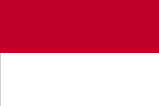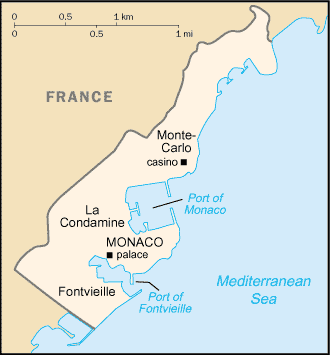|
Monaco
|

|
Capital: Monaco
Population: 38,964
Brief History of Monaco:
Monaco was originally founded as a colony of Genoa in 1215. The country has been ruled by the House of Grimaldi since 1297 except for a short period of time when it was under French rule from 1789 to 1814. Up until 1911, when Monaco became a constitutional government, the Prince of Monaco was the supreme ruler of the land.
In 1918 Monaco came to an agreement with France that France would offer some limited protection for Monaco. This provided that Monaco would be aligned with French policy and economic interests.
In 1993, Monaco became an official member of the United Nations with full voting rights.
In recent history, Prince Rainier III died on April 6, 2005. His son Prince Albert II became ruler of Monaco on July 12, 2005.
The Geography of Monaco
Total Size: 2 square km
Size Comparison: about three times the size of The Mall in Washington, DC
Geographical Coordinates: 43 44 N, 7 24 E
World Region or Continent: Europe
General Terrain: hilly, rugged, rocky
Geographical Low Point: Mediterranean Sea 0 m
Geographical High Point: Mont Agel 140 m
Climate: Mediterranean with mild, wet winters and hot, dry summers
Major cities:
The People of Monaco
Type of Government: constitutional monarchy
Languages Spoken: French (official), English, Italian, Monegasque
Independence: 1419 (beginning of the rule by the House of Grimaldi)
National Holiday: National Day (Prince of Monaco Holiday), 19 November
Nationality: Monegasque(s) or Monacan(s)
Religions: Roman Catholic 90%
National Symbol:
National Anthem or Song: A Marcia de Muneghu (The March of Monaco)
Economy of Monaco
Major Industries: tourism, construction, small-scale industrial and consumer products
Agricultural Products: none
Natural Resources: none
Major Exports:
Major Imports:
Currency: euro (EUR)
National GDP: $5,470,000,000
** Source for population (2012 est.) and GDP (2011 est.) is CIA World Factbook.
Back to Geography Home Page
